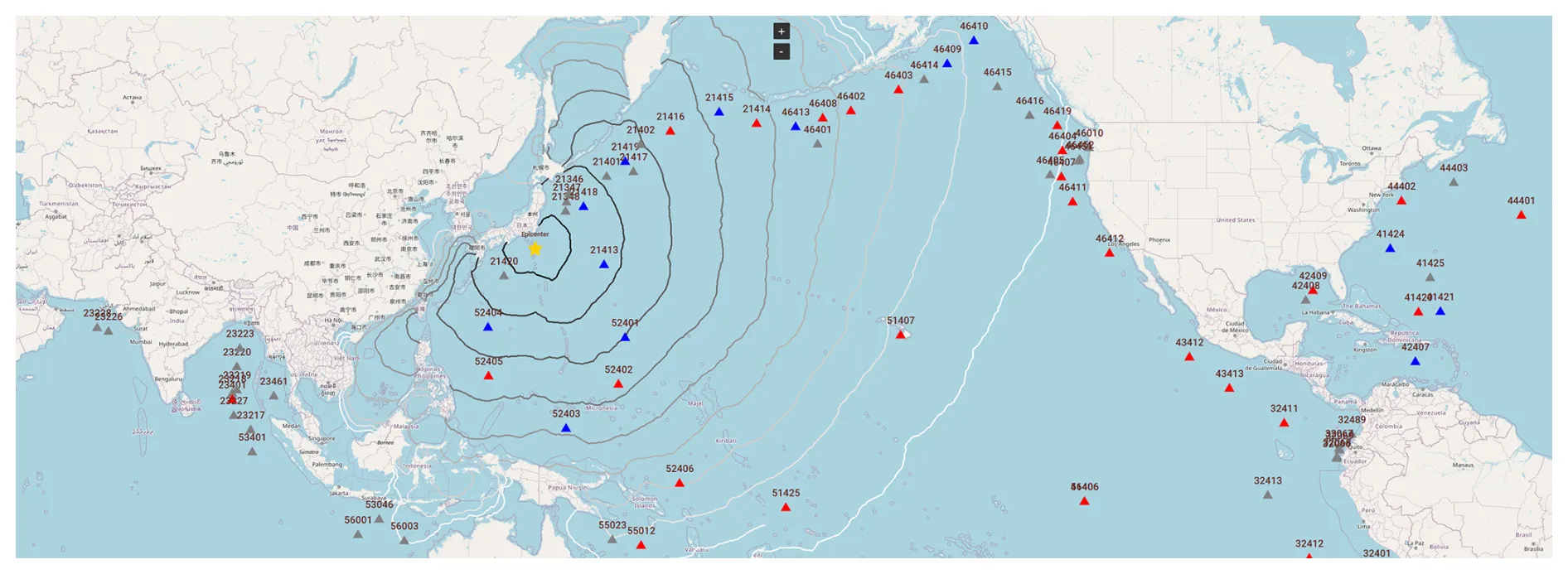Artificial Intelligence (AI) has advanced by leaps and bounds in recent years, revolutionizing the way we interact with technology. From chatbots that can hold fluid conversations to recommendation systems that personalize our online experience, AI has become an essential tool in our everyday lives.
However, the recent introduction of AI agents capable of taking control of devices and performing complex tasks has sparked renewed interest in the potential of generative AI. This new generation of AI not only promises to improve efficiency at work but also transform our relationship with technology, making it more intuitive and accessible.
In particular, the launch of "Computer Use" by Anthropic and the development of "Project Jarvis" by Google mark significant milestones in this evolution. These advances not only reflect the competitiveness between major tech companies, Google and Anthropic, but also highlight a shift towards intelligent automation, where virtual assistants not only respond to commands but anticipate needs and execute actions autonomously.
This ITD Consulting article examines in-depth these developments, Computer Use and Project Jarvis, their implications for users and businesses, Anthropic and Google, and what can be expected in the future in a rapidly evolving technological landscape with generative AI.

Computer Use by Anthropic: A New Paradigm in AI
What is Computer Use?
Last week, Anthropic introduced "Computer Use", an AI agent designed to take control of the user's computer and perform various tasks autonomously. This breakthrough of Computer Use has generated significant interest in the AI sector as it represents a step towards automating complex actions that previously required human intervention.
Through Computer Use by Anthropic, users can give specific commands, and the agent handles executing them, from creating a website to conducting research.
How Computer Use Works
Computer Use operates by continuously capturing the user’s screen. This technique allows the Computer Use system to analyze the content in real-time and execute actions based on the commands it receives.
While this functionality of Computer Use is innovative, its current performance is limited and, according to reports, the system can be slow due to the amount of processing required to interpret visual information. Anthropic’s approach to Computer Use implies that the agent must not only understand text but also the visual structure of the content it is analyzing.
Limitations and Costs
Despite its potential, Computer Use faces several limitations. Currently, the technology is expensive to implement, as it requires multiple API calls from Anthropic to complete more complex tasks.
Additionally, the Computer Use system has been described as "cumbersome and prone to errors," suggesting that more work is needed before it can be used effectively in everyday environments. As such, the Anthropic project with Computer Use is still taking time to come to fruition.
Project Jarvis by Google: The Response to the Competition
Introduction to Project Jarvis
In response to the launch of Computer Use, Google has been developing its own AI agent, internally known as "Project Jarvis." Unlike Anthropic’s solution, Project Jarvis is designed specifically to operate within a web browser, suggesting a different approach to task automation.
This agent from Project Jarvis is expected to be integrated into Gemini, Google’s family of language models, and enable users to perform searches, purchase products, and book flights directly from their browsers.
Features of Project Jarvis
One of the most prominent features of Project Jarvis is its ability to interact with the web pages the user visits. This means that, instead of taking full control of the computer, Project Jarvis will act as an assistant that can perform actions based on simple commands.
For example, a user could ask Project Jarvis to search for information about a product or make an online purchase. This approach with Project Jarvis allows Google to position itself in a niche market that seeks task automation in a user-efficient manner.
Current Status and Expected Launch
According to reports from The Information, Google plans to unveil Project Jarvis alongside a new version of Gemini, known as Gemini 2.0, in December. It is suggested that Google might offer a preview of the agent to a select group of users to identify and resolve issues before its official release.
Although the launch date for Project Jarvis is promising, the tech giant Google is still working on improving the functionality and effectiveness of Project Jarvis.
The Race for AI Assistants
An Expanding Market
The arrival of Computer Use and Project Jarvis underscores a growing trend in the tech industry: the race to develop virtual assistants that can perform complex tasks autonomously. In addition to Anthropic and Google, other companies like Microsoft and Apple are also working on their own AI systems.
For example, Microsoft introduced "Copilot Vision," which allows users to interact with websites, while Apple is developing a similar system that could recognize on-screen content and act accordingly.
Comparison Between Project Jarvis and Computer Use
While the AI assistants from Anthropic and Google have similar goals in terms of automation and productivity enhancement, each presents distinctive features that reflect their design approaches and philosophies. Computer Use focuses on total control of the computer, allowing it to execute a wide range of tasks, from file management to content creation.
Computer Use’s ability to capture the screen and perform actions directly in the user's environment makes this agent a powerful tool. However, Computer Use's comprehensive approach also has limitations: performance issues and the complexity of its operation can affect the user experience and, consequently, its widespread adoption. For those seeking efficient, quick solutions, any hindrances in the system's fluidity could be discouraging.
On the other hand, Project Jarvis adopts a more specific approach, focused on the browser. Designed to optimize the user experience in web environments, Jarvis allows users to perform tasks like searches, purchases, and bookings quickly and directly, which may appeal to those who spend a large portion of their time browsing the internet. This approach reduces complexity by limiting operations to the browser, which could lead to a smoother experience with fewer errors.
However, the specialization of Project Jarvis may also be a double-edged sword: while it may satisfy users looking for a less invasive assistant, its limited functionality may not be enough for those needing a more comprehensive solution that covers multiple aspects of their interaction with technology. Ultimately, the choice between Computer Use and Project Jarvis will depend on individual user needs and their willingness to sacrifice versatility for efficiency in a specific context.
Challenges and Opportunities
Technical Challenges
As technology advances, multiple challenges arise that companies must address. The complexity of implementing a system that can understand both text and visual elements on a screen presents a significant barrier. Additionally, the need to make multiple API calls to complete complex tasks can result in slow and costly performance. These technical challenges must be overcome for these AI assistants to become viable in a broader context.
Innovation Opportunities
Despite these challenges, there are also great opportunities for innovation in the AI field. The growing demand for automation in users’ daily lives opens the door to creative developments that can enhance efficiency and productivity. Over time, it is expected that these systems will become more accessible and affordable, allowing more people to benefit from their capabilities.

The Future of Generative AI
Projections and Trends
As the launches of Project Jarvis and other similar technologies approach, we are likely to see increased competition in the AI assistant space. Companies will be incentivized to innovate and improve their systems to attract users. This could result in the creation of more robust and versatile assistants that not only fulfill specific tasks but also learn and adapt to users' needs.
The Role of Ethics and Regulation
With the increasing autonomy of AI agents, there is also a need to consider ethical and regulatory issues. The ability of these systems to act without human intervention raises questions about privacy, security, and accountability. As these technologies become integrated into everyday life, it is essential to establish clear guidelines for their responsible use.
Implications for Users
Benefits of AI Assistants
AI assistants like Computer Use and Project Jarvis have the potential to transform the way users interact with technology. By automating repetitive tasks and facilitating access to relevant information, these systems can save time and increase productivity. Imagine an environment where you can dictate instructions to your assistant, and it handles execution, freeing up time for more creative or meaningful activities.
Security Considerations
Despite their advantages, it is crucial to consider the risks associated with implementing AI assistants like Computer Use and Project Jarvis. Capturing data and controlling actions on the user's computer may pose privacy threats. It is essential for the developing companies to implement robust and transparent security measures to protect user information and ensure these tools are used ethically.
Future Directions in Generative AI
Potential Innovations
As technology progresses, we can expect innovations that will improve the user experience with AI assistants. This could include more intuitive interfaces, advanced machine learning capabilities, and better integration with other apps and services. For example, the possibility for an AI assistant to understand the context and intent behind a request could significantly enhance its effectiveness.
AI in Various Sectors
In addition to automating daily tasks, generative AI could have a significant impact on various sectors. In education, AI assistants could personalize learning, adapting to the individual needs of each student. In healthcare, they could assist in diagnostics and treatment monitoring, optimizing processes for healthcare professionals.

The development of AI agents like Computer Use and Project Jarvis marks an exciting chapter in the evolution of artificial intelligence. As companies compete to offer innovative and efficient solutions, it is essential that they also address the ethical and technical challenges that arise with this new era of automation.
Over time, these systems like Computer Use and Project Jarvis could transform the way we interact with technology, enabling greater efficiency and productivity in our daily lives. The race for AI assistants is underway, and the future looks promising.
Generative AI is in its infancy, but its potential is immense. Collaboration between tech companies, researchers, and users is crucial to guide this development toward a future where technology not only improves our lives but does so in an ethical and responsible manner.
With a user-focused approach and continuous innovation, AI assistants could become an integral part of our daily lives, transforming not only how we work but also how we relate to the world around us. If you want to learn more about Computer Use and Project Jarvis and the advances in generative AI to incorporate them into your operations, write to us at [email protected]. We have a team of AI technology experts to advise you.





